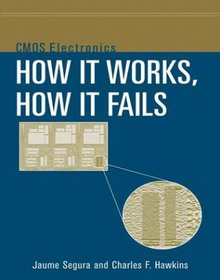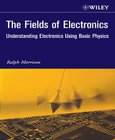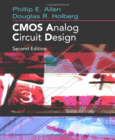CMOS Electronics
How It Works, How It Fails

Book Details:
| Publisher: | Wiley-IEEE Press |
| Series: | Wiley |
| Author: | Jaume Segura |
| Edition: | 1 |
| ISBN-10: | 0471476692 |
| ISBN-13: | 9780471476696 |
| Pages: | 368 |
| Published: | Apr 01 2004 |
| Posted: | Nov 19 2014 |
| Language: | English |
| Book format: | |
| Book size: | 2.98 MB |
Book Description:
CMOS manufacturing environments are surrounded with symptoms that can indicate serious test, design, or reliability problems, which, in turn, can affect the financial as well as the engineering bottom line. This book educates readers, including non-engineers involved in CMOS manufacture, to identify and remedy these causes. This book instills the electronic knowledge that affects not just design but other important areas of manufacturing such as test, reliability, failure analysis, yield-quality issues, and problems.Designed specifically for the many non-electronic engineers employed in the semiconductor industry who need to reliably manufacture chips at a high rate in large quantities, this is a practical guide to how CMOS electronics work, how failures occur, and how to diagnose and avoid them.Key features: Builds a grasp of the basic electronics of CMOS integrated circuits and then leads the reader further to understand the mechanisms of failure. Unique descriptions of circuit failure mechanisms, some found previously only in research papers and others new to this publication. Targeted to the CMOS industry (or students headed there) and not a generic introduction to the broader field of electronics. Examples, exercises, and problems are provided to support the self-instruction of the reader.
Download Link:
Related Books:
The Fields of Electronics
Understanding Electronics Using Basic Physics
A practical new approach that brings together circuit theory and field theory for the practicing engineerTo put it frankly, the traditional education of most engineers and scientists leaves them often unprepared to handle many of the practical problems they encounter. The Fields of Electronics: Understanding Electronics Using Basic Physics offers a highly original correction to this state of affairs.Most engineers learn circuit theory and field theory separately. Electromagnetic field theory is an important part of basic physics, but because it is a very mathematical subject, the connection to everyday problems is not emphasized. Circuit theory, on the other hand, is by its nature very practical. However, circuit theory cannot describe the nature of ...
CMOS Analog Circuit Design
2nd Edition
After years of anticipation, respected authors Phil Allen and Doug Holberg bring you the second edition of their popular textbook, CMOS Analog Circuit Design. From the forefront of CMOS technology, Phil and Doug have combined their expertise as engineers and academics to present a cutting-edge and effective overview of the principles and techniques for designing circuits. Their two main goals are: to mix the academic and practical viewpoints in a treatment that is neither superficial nor overly detailed and to teach analog integrated circuit design with a hierarchically organized approach. Most of the techniques and principles presented in the seco...
CMOS Analog Circuit Design
This text presents the principles and techniques for designing analog circuits to be implemented in a CMOS technology. The level is appropriate for seniors and graduate students familiar with basic electronics, including biasing, modeling, circuit analysis, and some familiarity with frequency response. Students learn the methodology of analog integrated circuit design through a hierarchically-oriented approach to the subject that provides thorough background and practical guidance for designing CMOS analog circuits, including modeling, simulation, and testing. The authors' vast industrial experience and knowledge is reflected in the circuits, techniques, and principles presented. They even identify the many common pitfalls that lie in the path of the...
2007 - 2021 © eBooks-IT.org



